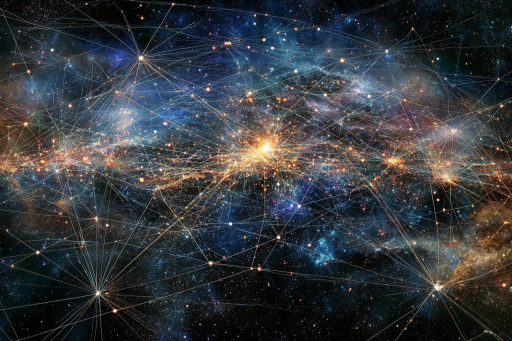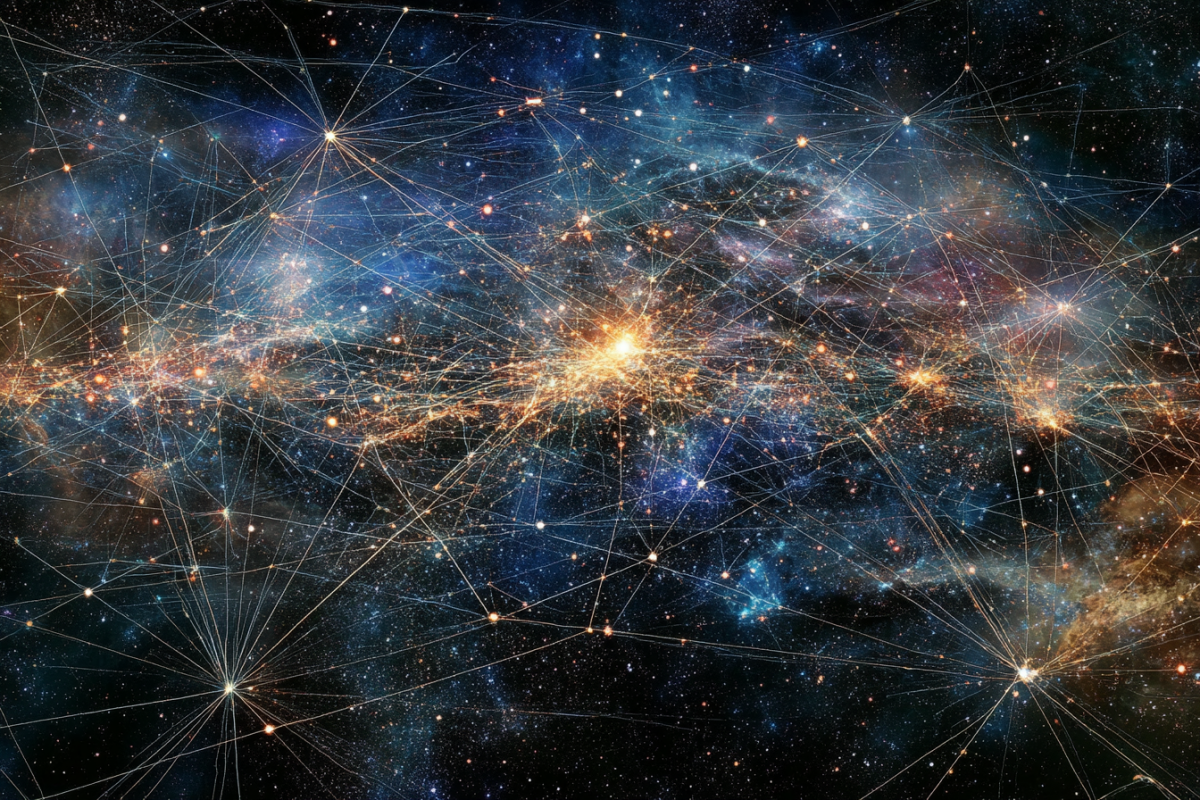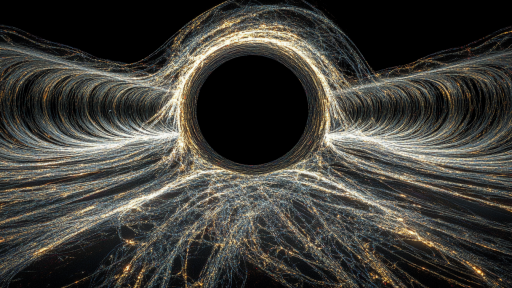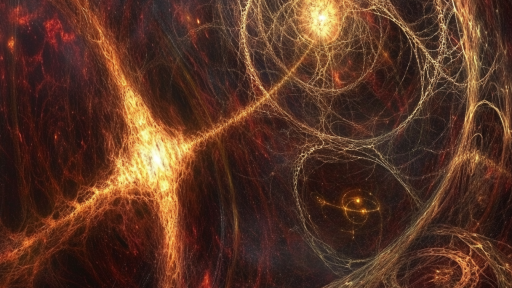
The universe may seem like an endless expanse of cold, lifeless space, but sometimes, it behaves in ways that feel eerily alive. From self-replicating cosmic structures to galaxies that act like neurons, space appears to function like a living system in ways we don’t fully understand. Could the universe be more than just matter and energy—could it actually be conscious in some way?
The Cosmic Web – The Universe’s Neural Network

The structure of the universe bears an eerie resemblance to the neural pathways of the human brain. Massive galaxy clusters are connected by filament-like strands of dark matter, mirroring how neurons link together to process information. Some scientists believe this similarity could hint at a deeper, possibly conscious organization of the cosmos.
The Universe Is Constantly Expanding—Like It’s Breathing

The universe isn’t static—it’s expanding at an accelerating rate, almost as if it’s inhaling and exhaling over cosmic timescales. Some theories even suggest that the universe expands and contracts in cycles, much like the rise and fall of a living organism’s breath.
Rogue Planets—Drifters Without a Home

Unlike most planets, which orbit stars, rogue planets wander the galaxy alone, drifting through the darkness like celestial nomads. These planets may harbor hidden oceans and even alien life, making them self-sustaining worlds that roam the cosmos like solitary organisms.
The Black Hole Information Paradox—Can Space “Remember”?

Black holes are known for consuming everything that crosses their event horizon, but some theories suggest they retain information about the things they swallow. This would mean the universe has a form of memory, where data is never truly lost, only transformed.
Pulsars—The Universe’s Beating Hearts

Pulsars are rapidly spinning neutron stars that emit rhythmic radio signals, beating like the pulses of a cosmic heart. Some pulsars are so precise that they rival atomic clocks, leading some to wonder—are they natural, or could they be artificial beacons?
Quasars—Galactic Powerhouses That Never Stop Feeding

Quasars are supermassive black holes at the centers of galaxies, devouring matter and blasting out incredible amounts of energy. They function almost like cosmic digestive systems, constantly consuming and transforming the universe’s matter into pure energy.
The Self-Replicating Stars of the Universe

Some stars form in strikingly repetitive patterns, almost as if they are cloning themselves across space. Certain clusters appear to reproduce in waves, mimicking the way cells divide in living organisms.
Dark Energy—An Invisible Force That Controls the Universe

Dark energy is the mysterious force accelerating the expansion of the universe. Scientists don’t know exactly what it is, but it behaves like an unseen, omnipresent energy field, keeping the cosmic balance in check—almost as if the universe has an internal guiding force.
The Cosmic Microwave Background—The Universe’s Fossilized Whisper

The Cosmic Microwave Background (CMB) is the faint radiation left over from the Big Bang, like the afterglow of the universe’s birth. It acts almost like a genetic imprint, carrying information from the earliest moments of time.
The Multiverse Theory—Is the Universe Cloning Itself?

Some physicists believe that our universe isn’t alone—instead, it might be one of countless parallel universes. If true, the cosmos could be replicating itself endlessly, like a living organism reproducing on a cosmic scale.
The Universe Might Be a Giant Simulation

Some scientists and philosophers propose that the universe functions like an advanced simulation, with laws of physics acting as coded rules. If true, then the cosmos might not just act alive—it could be an artificial creation, following complex algorithms.
Is the Universe More Alive Than We Think

The universe behaves in ways that are strikingly similar to living organisms. From self-replicating patterns to rhythmic pulses of energy, it seems to follow processes that mirror life itself. Could this mean that the cosmos has an awareness of its own existence—or is it simply following unknown physical laws?





